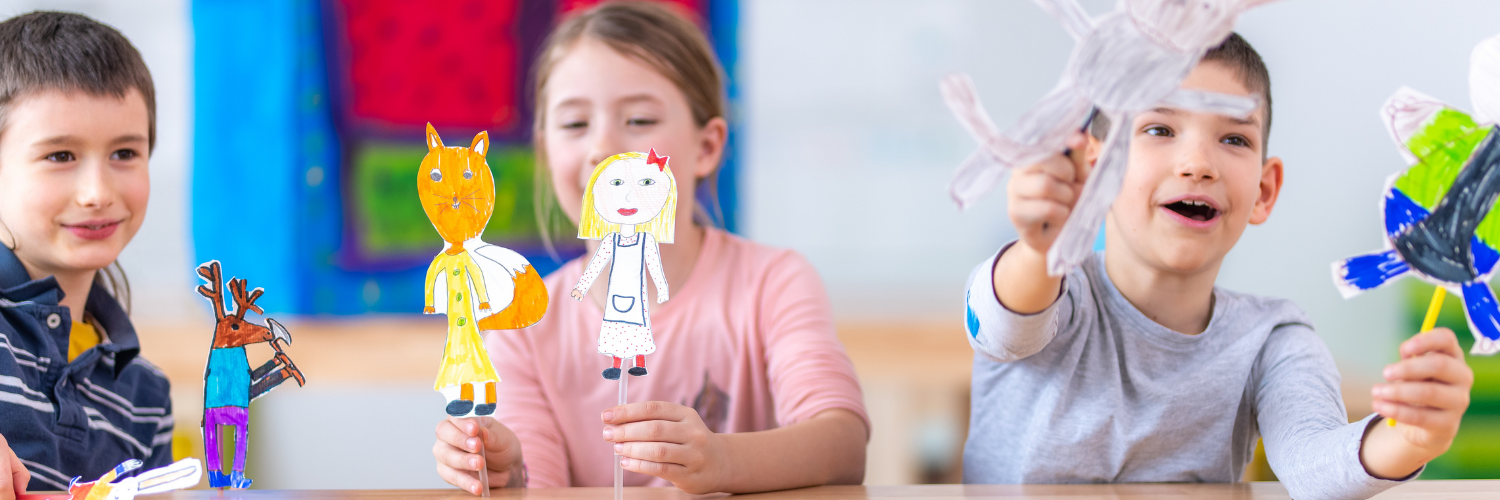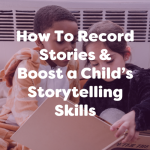
This blog has been written by EYR Industry expert Emily Hanson, a qualified EYFS teacher with an M.Ed in Education from the University of Cambridge. In this blog, Emily delves into 10 different activity ideas to help you celebrate National Storytelling Week with your little ones. To learn more about Emily, visit her website or follow her on Instagram.
As National Storytelling Week 2022 beckons, we are reflecting on this year’s brilliant theme of ‘Your Story, My Story’. Whether it’s retelling a child’s life and their journey to the person they are today, promoting little ones to author their own tales, or just getting stuck in with all sorts of storytelling activities, there are endless ways you might get involved. It can get a tad overwhelming at times – so we’ve done the work for you! Here are ten great activity ideas to get your little ones involved; thinking about what ‘Your Story, My Story’ could mean to them; enhancing your literacy provision and inspiring a love of literature everyday, separated into inputs and continuous provision areas.
Group inputs
1. Reading and reflecting on Super Duper You by Sophie Henn
Read with a small group, or the whole class (dependant on the needs of your cohort) the book ‘Super Duper You’ by Sophie Henn. Question your little ones about what makes them unique, and why we can all be super despite our differences! Enhance your little one’s experience with superhero dolls, see which one they most identify with and why!
2. Make story books
Having read and talked about ‘Super Duper You’, little ones might like to try recreating this story with their very own book. With a supportive adult, they can fold paper into a ‘book’ shape and draw pictures and write (if they are able) all about themselves. Why not try using prompts by asking them Why are they great? What do they love about themselves? Who is in their family?
3. Storytelling show and tell
To enhance this activity and for those who are happy to, why not encourage your little ones to share their very own stories, to the rest of the class? They might like to read it out, or simply share what they like about their book. Encourage the ‘audience’ to ask questions about the stories of their friends to learn about each other, or perhaps for younger little ones simply encourage them to share what they enjoyed about the story.
4. Invite a local speaker or parent to visit and share their own story
Ask around the parents and guardians of your setting to see if any have particularly interesting stories to share about their lives. Perhaps they have a job that took a lot of time to train for, have life experiences that they can share, or were born in a different country and can share their journey to moving to a new place. Ask them to visit, or call in to the setting on a video call, and share their story, encouraging little ones to ask lots of questions and reflect on how speaker’s story might be different to their own.
Continuous provision activities
5. Create a “My Story, Your Story” reading collection in the reading area
Look through your book collection to find stories that share a narrative of one individual or a group that goes through a particular journey, or stories that focus on ‘all about me’ topics. Display them prominently in your setting, perhaps with the homemade books you created in your class inputs!
6. Photos of children in your class in the writing area
Providing children have permission, print out images of the children in your class and setting, and display these in your writing or mark making area to prompt children to think about their own lives, themselves, and their stories.
7. Mirrors and felt faces
A great point for the start of National Storytelling week. Supply various skin tone shades of circle shaped felt with a variety of ‘features’ – simple triangles, circles, etc, in different colours. Add small mirrors and encourage your little ones to create their own face and reflect on who they are. A supportive adult might scaffold conversation to discuss similarities and differences, the point being throughout to support self reflection.
8. Theatre role play area
Set up your role play area, outdoors or indoors, to create a theatre style ‘stage’. Add lots of fancy dress, perhaps even a director’s ‘chair’ (just a normal chair with some fabric, or a sign that the children help create!). Children can act out stories they are familiar with, or role play their own lives and make a play about it. Encourage little ones to create ‘tickets’ to watch shows, or ‘posters’ about what show they are going to present.
9. Make pizza faces
As this week is all about telling our own stories, why not work on a different type of storytelling – a recipe! Work with little ones in small groups to follow a basic pizza dough recipe, then encourage them to decorate the pizzas to look like their faces. Peppers for the mouth, tomatoes for eyes, cheese for hair – the list goes on!
10. Create a storytelling tuff spot
As the week goes on, children will have become more familiar with thinking about what their own ‘story’ could be. Why not encourage them to retell familiar stories to take ownership of them, and make those ‘their own’?
Start by choosing simple small world figures that represent a really familiar story to your cohort. Traditional tales like Goldilocks and the Three Bears are a great option. Encourage your little ones to retell what they remember.
To make things even more exciting, why not try adding completely different figures to a familiar scene, like dinosaurs to the tale of the Three Little Pigs! EYR’s Really Random Story bags are a fantastic resource for this activity as they encourage children to think outside of the box as they select random items to formulate a whacky story. For those writing, they may like to scribe simple words that go with their story, too.




